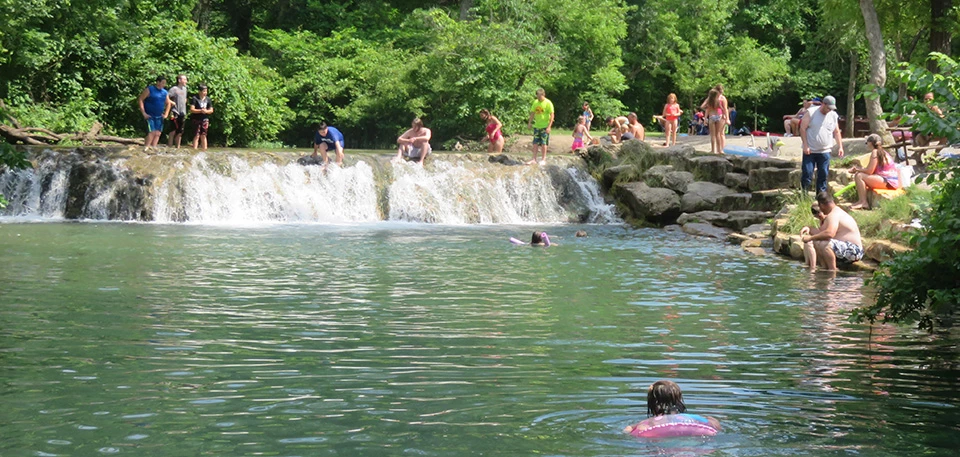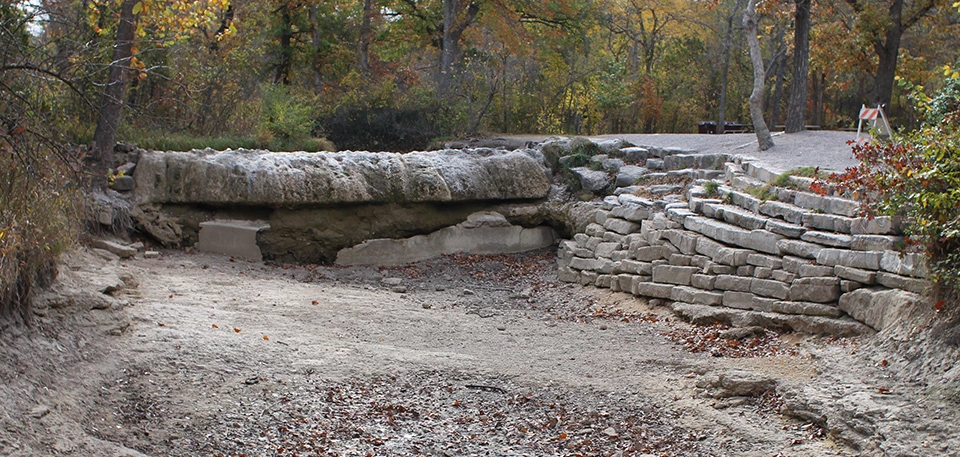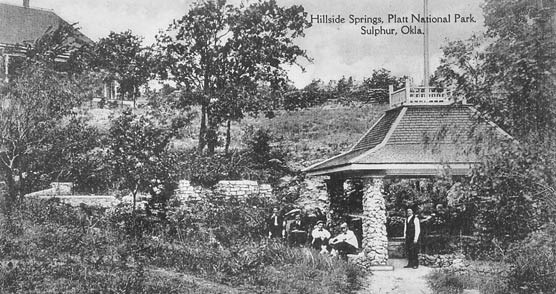|
Little Niagara (wet and dry) 

Freshwater SpringsMost of the water in Travertine Creek comes from Antelope and Buffalo Springs. These two springs have a combined flow of about five million gallons of water a day during high flow years. However, sometimes no water comes out of these two springs. Why? The water in the springs comes from the Arbuckle-Simpson aquifer. When water is drained from the aquifer through springs and wells faster than rainfall can refill it, these two springs can and will run dry. From the beginning of the park's history, the water of Travertine Creek was very important. Records of the streams flow and condition were maintained throughout this period. Antelope and Buffalo Springs have dried up many times, most significantly in the 1910s, 1930s, and 1950s. These were the times of deep droughts in Oklahoma. Antelope and Buffalo Springs have gone dry over 20 times in the last 120 years. At times they were dry for only a couple of weeks, and other times, for over two years. In contrast, they ran for over twenty years straight from the mid eighties to the early 2000s, though there were several times they slowed down during that period. Factors such as runoff rate and absorbtion by vegetation influences how much rain makes it down to the aquifer. A large, sudden, and heavy rainstorm is not as helpful for aquifer refill as the same amount of rain is when it is spread out over several days. Human use is another important factor, the more water people pull from the aquifer for human use via wells, the more rain it takes to replace it. Documented dry periods for Antelope Springs:Mar 1911 - Apr 1912 
Mineral SpringsThere are a number of cold-water mineral springs in the park which give rise to sulphur, bromide, and iron-bearing waters. Most of these are enclosed in pavilions or small decorative pools constructed of native stone and shaded by groves of large, old trees. Unlike Hot Springs National Park, in Arkansas, which in the past maintained facilities for various mineral water therapies, the Platt Historic District never hosted a publicly owned bathhouse. The National Park Service makes available and maintains the various springs for all visitors and indicates their mineral composition, but makes no claim regarding their medicinal or therapeutic values. |
Last updated: January 28, 2023
